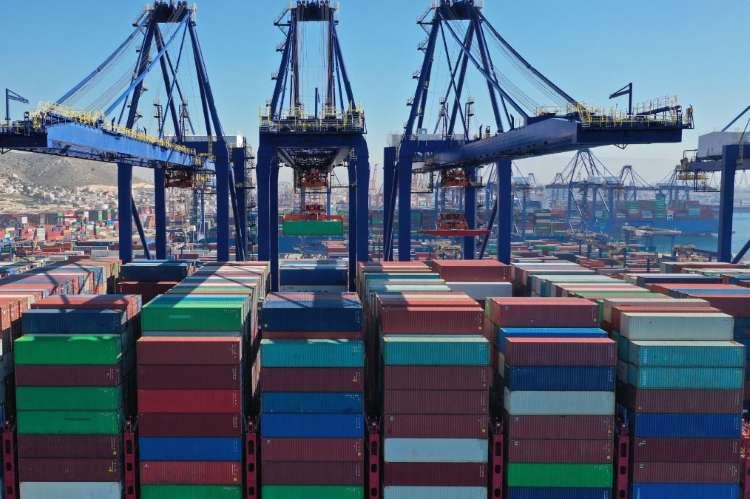Despite months of negotiations, US President Donald Trump shows no signs of easing his tariff aggression. The United States continues to escalate its trade war, expecting that punitive tariffs will shrink its persistent trade deficit. While the world debates the merit of these tactics, India finds itself at a critical situation — one that could swing in either direction depending on how it responds.
Yet, India’s official stance remains cautiously optimistic. The government think tank NITI Aayog believes the tariff war presents an opportunity for Indian exporters to gain global market share, especially in the US. In its latest quarterly trade report, it calls for fast-tracking a bilateral trade agreement with Washington — arguing that delay could cost India a 10% tariff on its exports, while competitors such as China, Mexico, and Canada are already facing US tariffs ranging from 20% to 50%.
READ | Lateral entry reform faces bureaucratic and political hurdles
Gaining ground amid disruption
India’s edge lies in the relative competitiveness of its exports. According to NITI Aayog, India outperforms key rivals across several product categories. The imposition of steep tariffs on other major exporters could tip the scales further in India’s favour. Recent data from SBI Research suggests that India has enough depth in its export portfolio to cushion any fallout from the tariff war — particularly in services trade, which is bolstered by its robust IT and financial services sectors.
Signs of a trade realignment are already visible. Data from China Customs and India’s Commerce Ministry indicate a significant drop in Beijing’s exports to the US as of May 2025. At the same time, markets like India, the EU, and ASEAN have seen an uptick. The Delhi-based Global Trade Research Initiative (GTRI) confirms this shift in trade flows.
Chemicals, textiles, and pharmaceuticals in focus
SBI’s analysis points to India’s chemical sector as a key beneficiary. Currently, only China and Singapore command a larger share of US chemical imports. With China now facing steeper reciprocal tariffs, India has a chance to expand its footprint in chemical and pharmaceutical exports.
Textiles offer another promising window. Countries such as Bangladesh, Cambodia, and Indonesia dominate apparel exports to the US, while India accounts for just 6%. A redirection of sourcing away from these nations could help India gain an additional 5% market share—if it moves quickly to fill the gap.
A tariff map with strategic clues
NITI Aayog’s analysis of the harmonised system codes reinforces India’s relative advantage. At the broad HS2 level, India faces lower or comparable tariffs in 22 of the top 30 product categories imported by the US. In six categories, India faces marginally higher tariffs (up to 3%), but these differences are generally negligible. These categories alone account for over 12% of total US imports, highlighting their commercial importance.
The picture is even more encouraging at the granular HS4 level. In 80 of the top 100 product categories, India’s competitors are burdened with higher US tariffs. These categories represent 22% of India’s total exports to the US, valued at $17.66 billion. Among the standout sectors are made-up textile articles (HS 63), electrical machinery (HS 85), and nuclear reactors and machinery parts (HS 84). These tariff differentials could serve as a launchpad for India to solidify its presence in the US market.
A bilateral pact in the balance
Bilateral trade between India and the US stood at $123.8 billion in the last fiscal year, with India enjoying a $37.7 billion surplus. This imbalance is one of the triggers for the current US tariff posture. In response, Washington is demanding trade agreements that lower entry barriers for US goods. A fresh round of tariffs is scheduled to kick in on August 1, lending urgency to the ongoing negotiations on a proposed interim trade deal between the two countries.
While opportunities abound, India must remain alert to the broader diplomatic efforts. The US is simultaneously negotiating with over 20 countries and has sought concessions from more than 90. For India, this is a reminder that delay could be costly. The opportunity to grow its footprint in sectors such as electronics, textiles, and seafood is real—but it will depend on how quickly and smartly Indian businesses can reconfigure supply chains.
India must strike a careful balance between seizing short-term gains and pursuing long-term resilience. A trade deal with the US is necessary but not sufficient. India must continue diversifying its trade partnerships to reduce vulnerability. Tariff advantages, after all, can vanish as swiftly as they appear.
To make the most of this moment, India must sharpen its strategic focus, protect critical sectors, and adopt trade policies that reinforce competitiveness. The reshaping of global trade flows is underway. Whether India becomes a principal actor or a bystander will depend on the speed, coherence, and ambition of its next moves.

